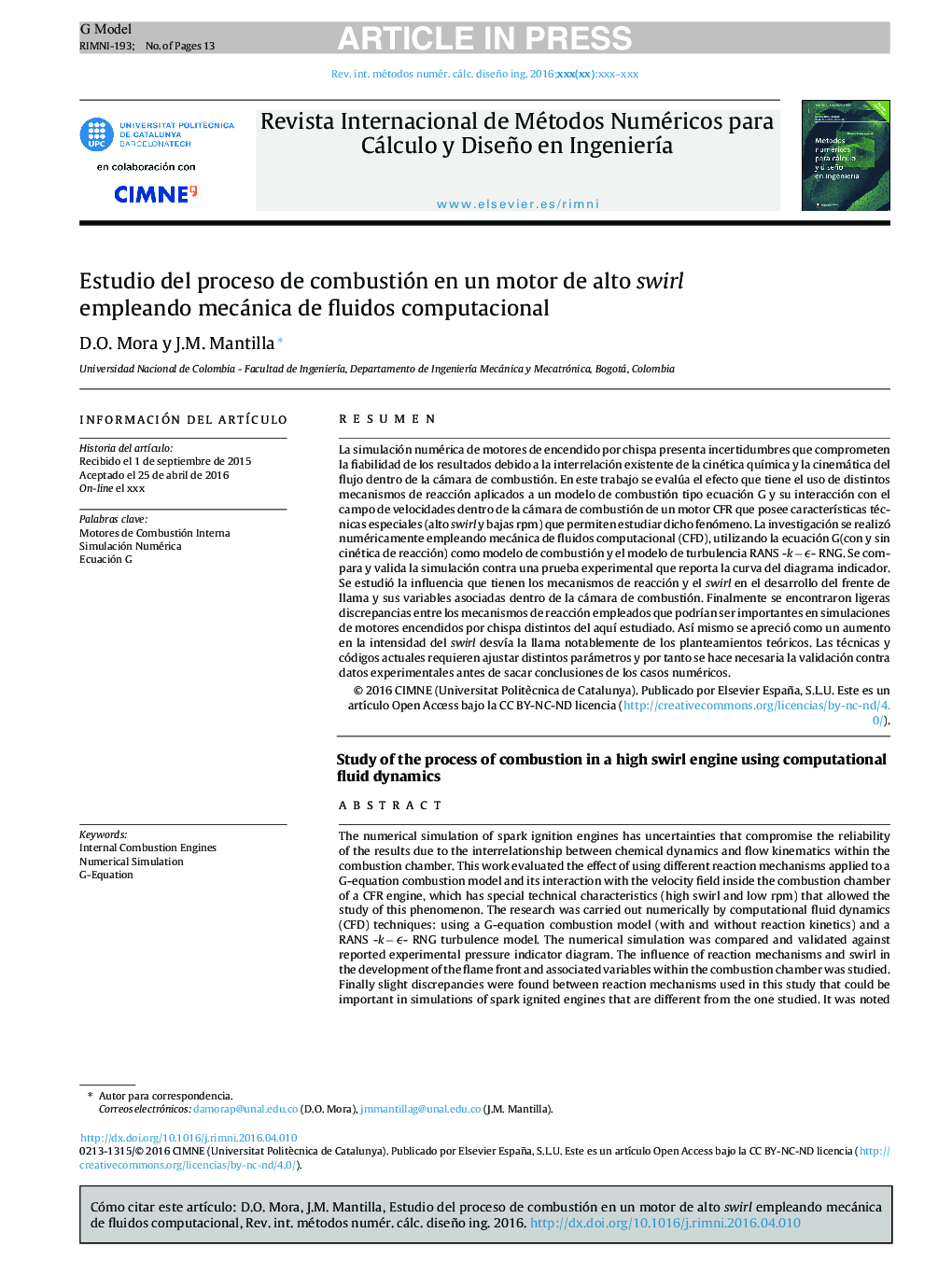| Article ID | Journal | Published Year | Pages | File Type |
|---|---|---|---|---|
| 8050690 | Revista Internacional de Métodos Numéricos para Cálculo y Diseño en Ingeniería | 2017 | 13 Pages |
Abstract
The numerical simulation of spark ignition engines has uncertainties that compromise the reliability of the results due to the interrelationship between chemical dynamics and flow kinematics within the combustion chamber. This work evaluated the effect of using different reaction mechanisms applied to a G-equation combustion model and its interaction with the velocity field inside the combustion chamber of a CFR engine, which has special technical characteristics (high swirl and low rpm) that allowed the study of this phenomenon. The research was carried out numerically by computational fluid dynamics (CFD) techniques: using a G-equation combustion model (with and without reaction kinetics) and a RANS -k â ϵ- RNG turbulence model. The numerical simulation was compared and validated against reported experimental pressure indicator diagram. The influence of reaction mechanisms and swirl in the development of the flame front and associated variables within the combustion chamber was studied. Finally slight discrepancies were found between reaction mechanisms used in this study that could be important in simulations of spark ignited engines that are different from the one studied. It was noted that an increase in the intensity swirl yields a flame development deviation from the theoretical models. The current codes and simulation techniques require tuning of various parameters, and thus, the validation against experimental data is needed before drawing conclusions from the numerical cases.
Related Topics
Physical Sciences and Engineering
Engineering
Computational Mechanics
Authors
D.O. Mora, J.M. Mantilla,
